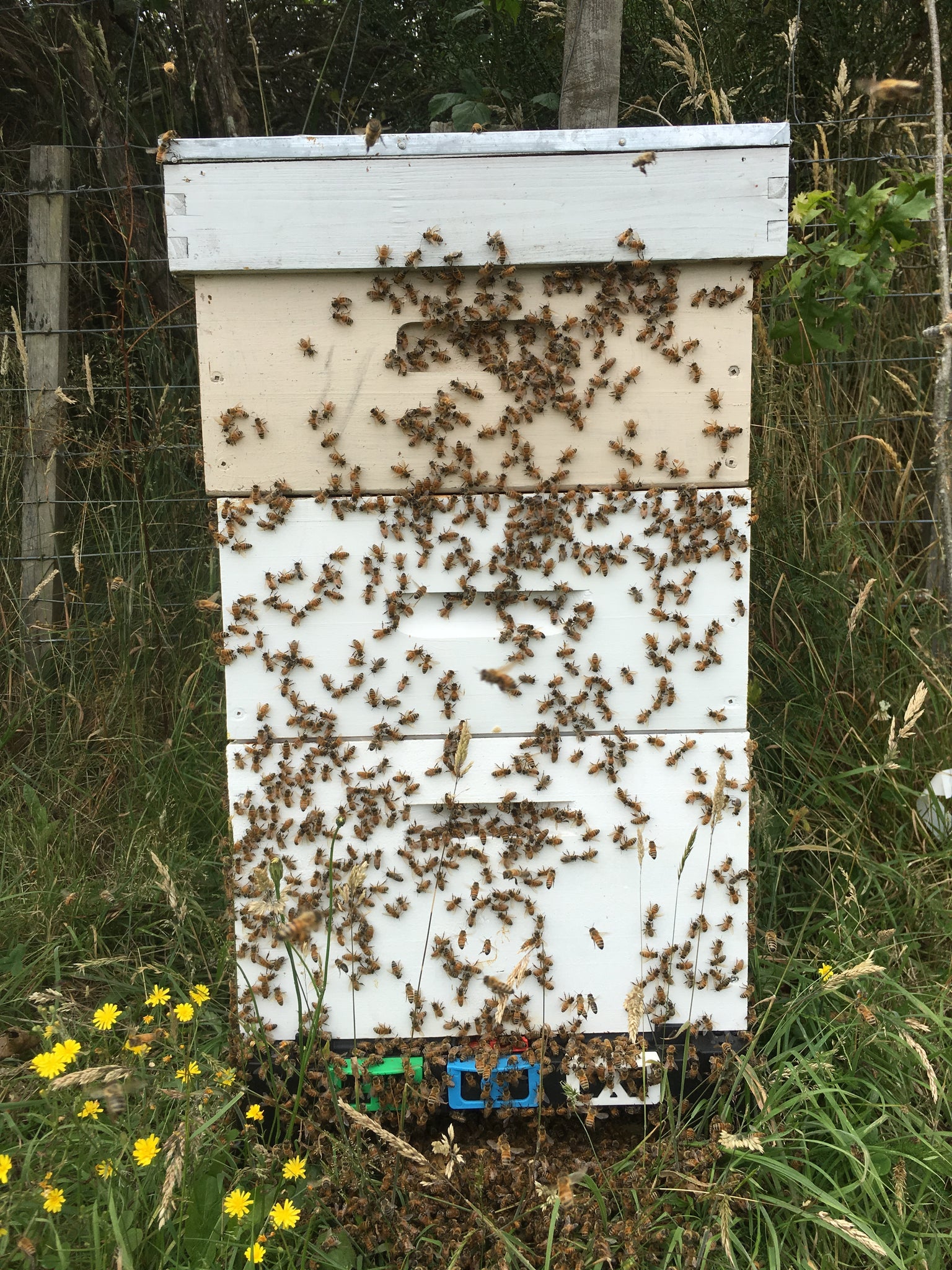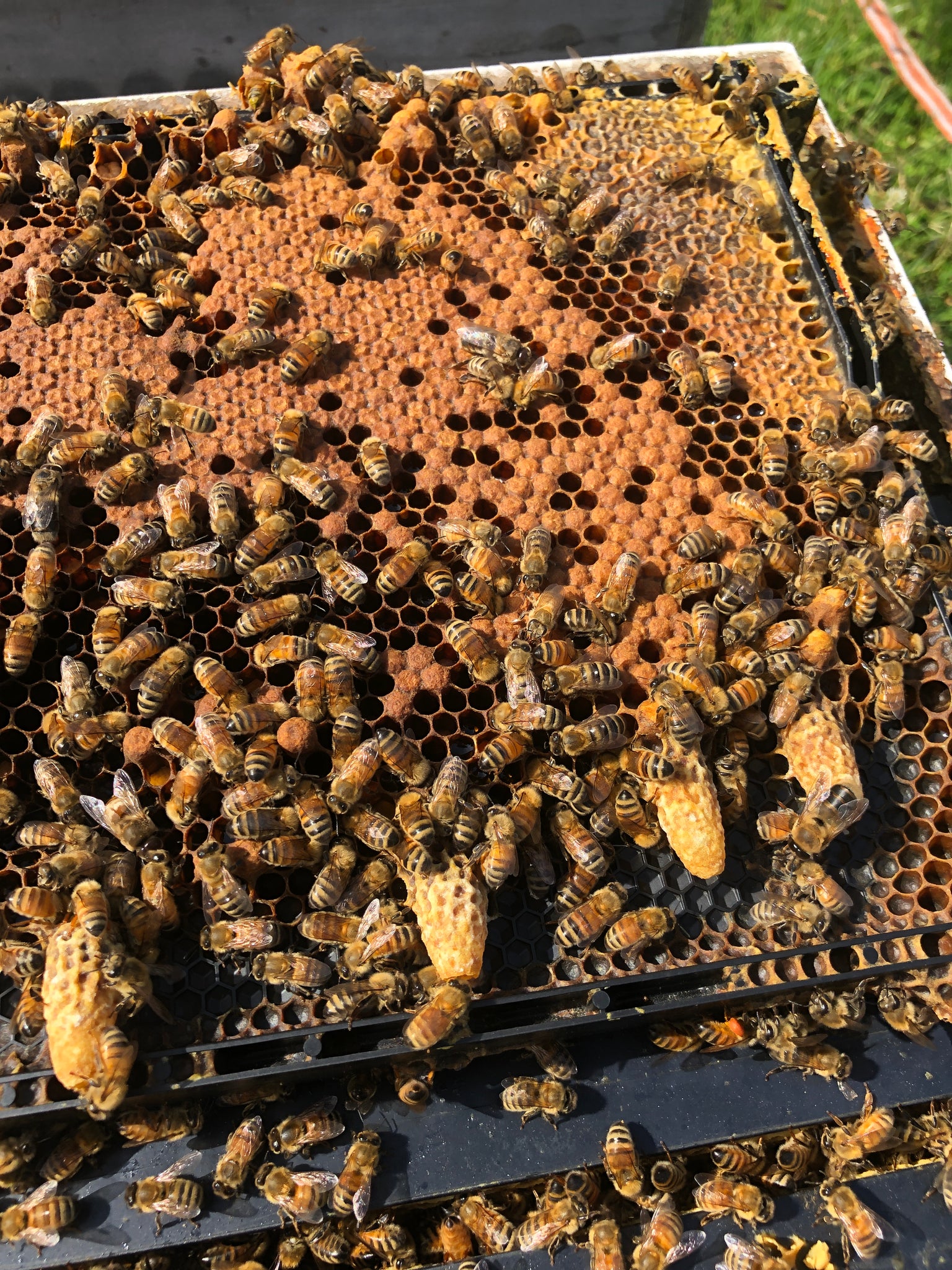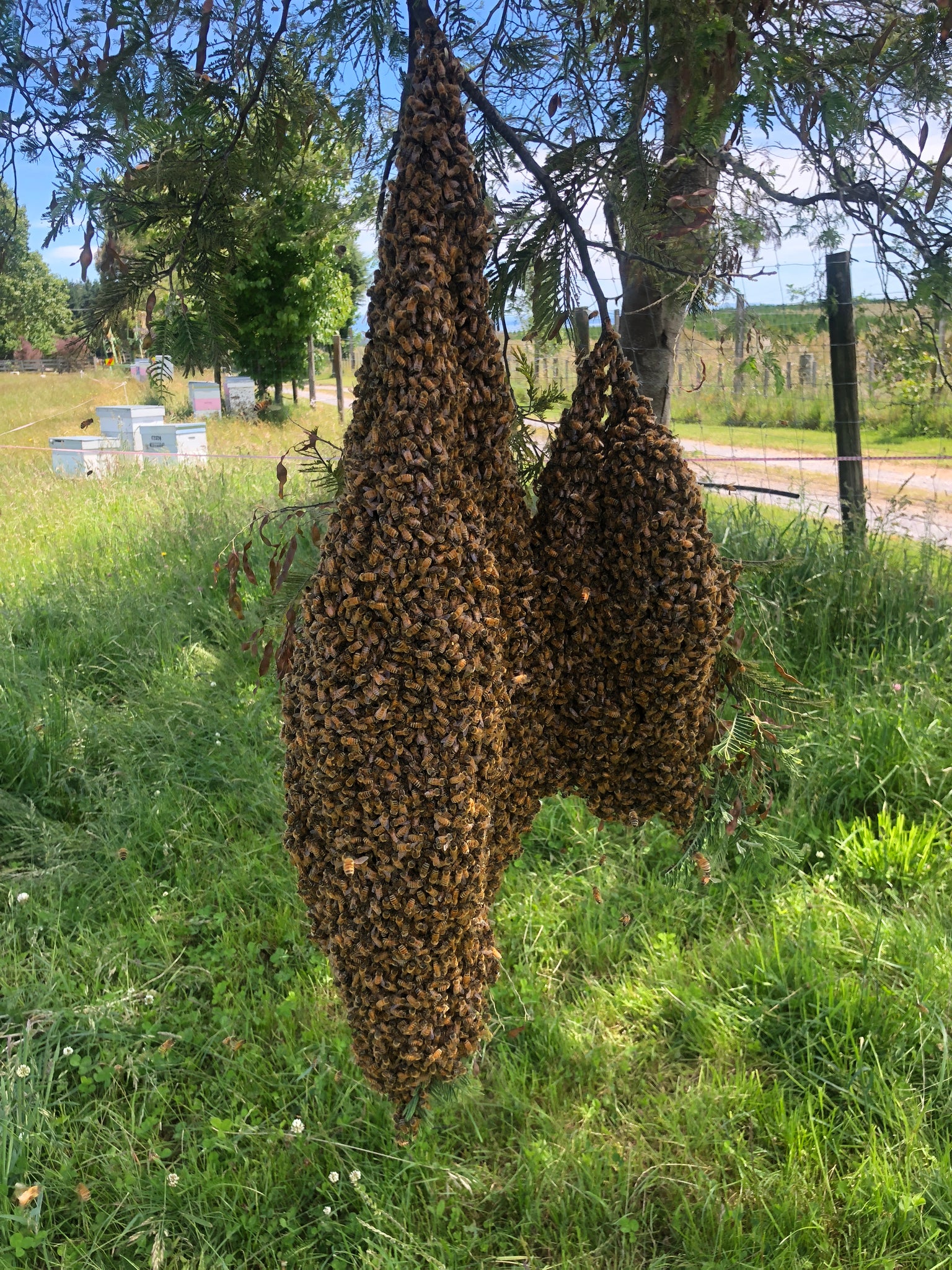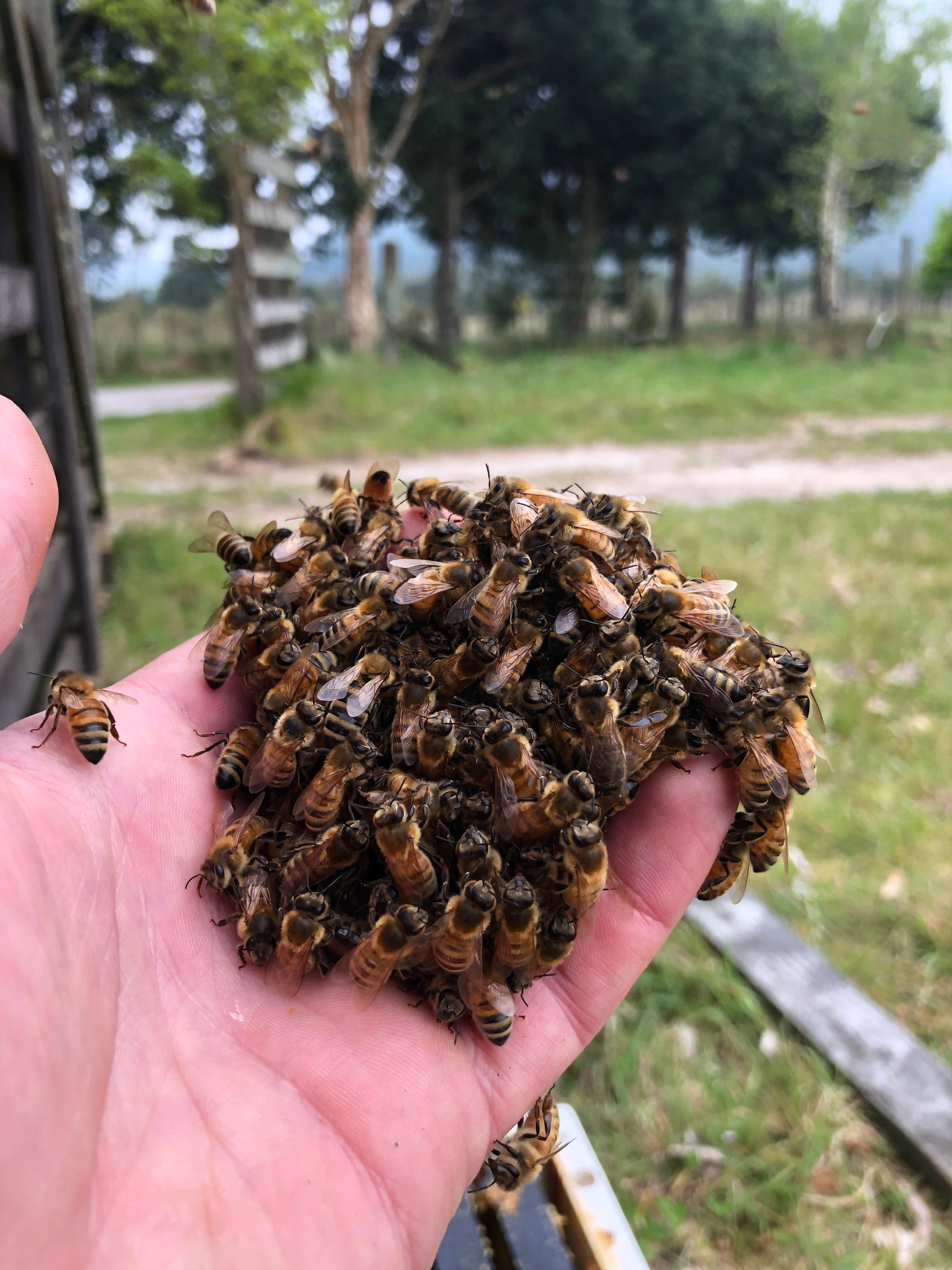
It is officially swarm season! Swarms can contain several hundred to several thousand worker bees, a few drones and one queen. Swarm season happens every year in the warmer months, following a cold season. It is a very normal and natural behaviour for a hive to swarm and there is nothing to fear. It is common with well established hives where the queen is on her second year of life. A hive has only successfully reproduced when the hive has swarmed and found a new home, the reason for this is to diversify genes. Without swarming, the gene pool would stay the same and this could cause future problems with breeding.
Swarming happens as the weather gets warmer, the activity in the hive increases. More worker bees go out to forage, and the queen starts to lay a lot more. It is easy for the hive to become overcrowded and for resources to become scarce as there are too many hungry bees and not enough space to store food.
This beehive is getting overcrowded, you can tell by the bees clustering on the bottom and by the bees hanging around on the front of the hive
Once a hive decides to swarm, the queen bee lays eggs in queen cups to prepare for another queen. The old queen leaves the hive, taking half of the workers with her, to search for a new home. The new queen will hatch in the old hive and the remaining workers consider her their new queen. Each hive or swarm has only one queen.
Four swarm cells that are being prepared in a beehive
The swarm will follow the queen until she finds a place to land, and then immediately the swarm of bees will surround her to keep her safe, and other bees will fly off to search for a new place to live. Once they have found a place to live, they will start building a new hive. If a swarm lands in your backyard, they may only be there for a few hours, or they may be pretty happy and want to settle down for good.
A swarm that has landed on a tree branch
It is important to remember that a swarm of bees are not dangerous, they have left their hive, they do not have any babies or food to protect. Therefore, when they are swarming it is when they are most relaxed and docile. It is easy for an experienced beekeeper to collect a swarm, so don't call pest control. The beekeeper can easily take them to a safe new home where they can build their hive. Saying this if you do happen to come across a swarm call your local beekeeper straight away and keep your distance.
Handling bees from a swarm, we don't recommend this. This is to showcase how docile they are
We manage swarming by checking hives every 10 days during ‘swarm season’ and look for hives that show signs of swarming. If they are starting to show the signs, we go through the process of removing swarm cells, or add more room to the hive so they are not as congested or we split a hive which replicates a natural swarm, we then take the queen and half the hive into a new hive. We then monitor to ensure that the old hive re-queens successfully. Every few years we buy queen cells from a different beekeeper, this enables us to diversify our gene pool maintaining the natural process in a controlled environment.





1 comment
Happened a couple years ago my workshop in frankton Hamilton.
Bees come outta know where and land on a tree next door at another business but the swarm was 4 times the size of the bees in your pic.
Pretty scary and noisy!!!
Arty on